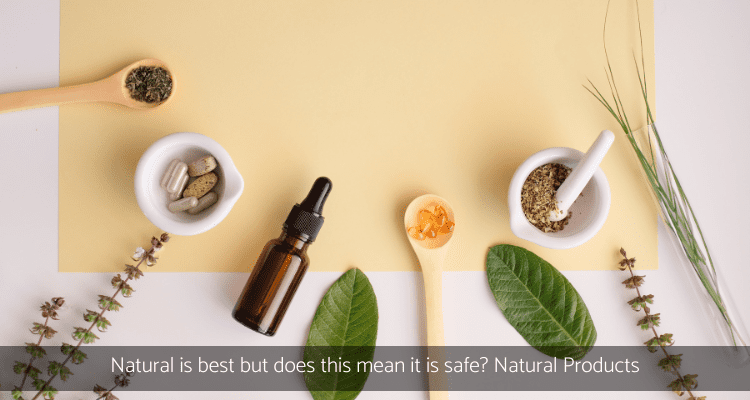What does the term natural really mean? If you think a food is “all natural” just because the label says it is, think again.
The term natural is widely used in food labeling as well as a variety promotional techniques in personal care and cleaning products.
I found natural definitions and contexts being rather vague. I checked our Concise Oxford Dictionary on the shelf which defines natural as “constituted by nature”. And when there is a product that says it is natural, I tend check the labels first to see what it contains or what it is made from.
Natural in it’s raw form is unadulterated, comes directly from a natural substance. You’ll find say, cosmetics or personal care products such as soaps and shampoos containing lavender or aloe vera, conveying they are natural. Yes, the process is natural but the method to get there can be questionable.
Poison ivy, ylang-ylang oil and sandalwood oil are all considered to be natural, but are important allergens. Even botanical extracts like tea tree, some people are ok with but others have truly an adverse reaction to this natural extract. Asbestos and uranium are also found naturally in the earth, they can kill. Cadmium, mercury and lead are naturally heavy metals toxic to humans.
Every man made product eventuates from the earth initially.
The term natural appears to imply foods are minimally processed and ingredients do not contain manufactured ingredients. Even personal care and cleaning products, the lack of standards in most country jurisdictions means that the term means nothing, zilch, zero.
With the power of marketing, there appears to be a misconception.
In recent years, many people seem to be turning to all-natural products in an effort to avoid the chemicals that they perceive are worsening their health.
In reality, according to Katta (2008), most people need to be specifically cautioned that all-natural does not equate to safe (or even safer). This point must be emphasized to consumers.
Dr Mercola (2008) questions would you take a taste of your mascara or shaving cream? Probably not.
Dr Mercola continues however, if you do happen to eat these chemicals, your digestive system can produce specific enzymes to break down these toxins and excrete them … something that doesn’t readily occur when you absorb them through your skin.
The US FDA (2012) has not developed a definition for use of the term natural or its derivatives. However, the agency has not objected to the use of the term if the food does not contain added colour, artificial flavours, or synthetic substances.
Whether it is food, cosmetics or cleaning products, I’d check all labelling.
I find if the label reads like a chemical list, or I can’t pronounce the words, move onto another product label.
If you could eat the ingredients, your skin will benefit from it.
The ingredients should be of a high quality.
Unsynthesized ingredients, but if they are, use only small amounts of product and less of it.
If you’re unsure what an ingredient is, type it into the Environmental Working Group’s Skin Deep Cosmetic Safety Database, and you’ll get all the information you need about whether or not it’s safe.
Sources:
Dr Katta, R (2008), ‘Common Misconceptions in Contact Dermatitis Counseling’, Dermatology Online Journal, vol. 14, (4): 2, (Online), Available: http://dermatology-s10.cdlib.org/144/commentary/contact_dermatitis/katta.html , [16 January 2013]
Dr Mercola, J. (22 January, 2008), The Rise of Organic Makeup, (Online), Available: http://articles.mercola.com/sites/articles/archive/2008/01/22/the-rise-of-organic-makeup.aspx , [16 January, 2013]
US Food and Drug Administration (4 April, 2012), What is the meaning of “natural” on the label of food?, (Online), Available: http://www.fda.gov/AboutFDA/Transparency/Basics/ucm214868.htm , [16 January 2013].
Author
-
We’re glad you’re here. We’re Carol and Tony, founders of one of the longest running Healthy Home Blogs in the world, Mitey Fresh Australia. We’ve been on this journey for the last 25 years and are passionate about helping families sift through health hazards and triggers like allergens, mould, water damage, chemicals and EMFs, to get clarity about what’s toxic and what’s not so they can create a healthy and happy home for their family they love. Each month, people visit this blog seeking focus on the health and wellbeing of their loved ones, sustainable and effective practice tips and guides, to help create and manage healthier indoor spaces, improve the built environment that is pleasing to the senses and support healthy living and nature, every day. Starting this blog was to help change people’s lives, one family at a time, and we can’t wait to share how its allowed us to stand next to you and show you how interpreting these synergies between buildings and the environment they are built in will impact upon the health and well-being of those who occupy them. Find out more about Healthy Homes and what this blog can do for you!





